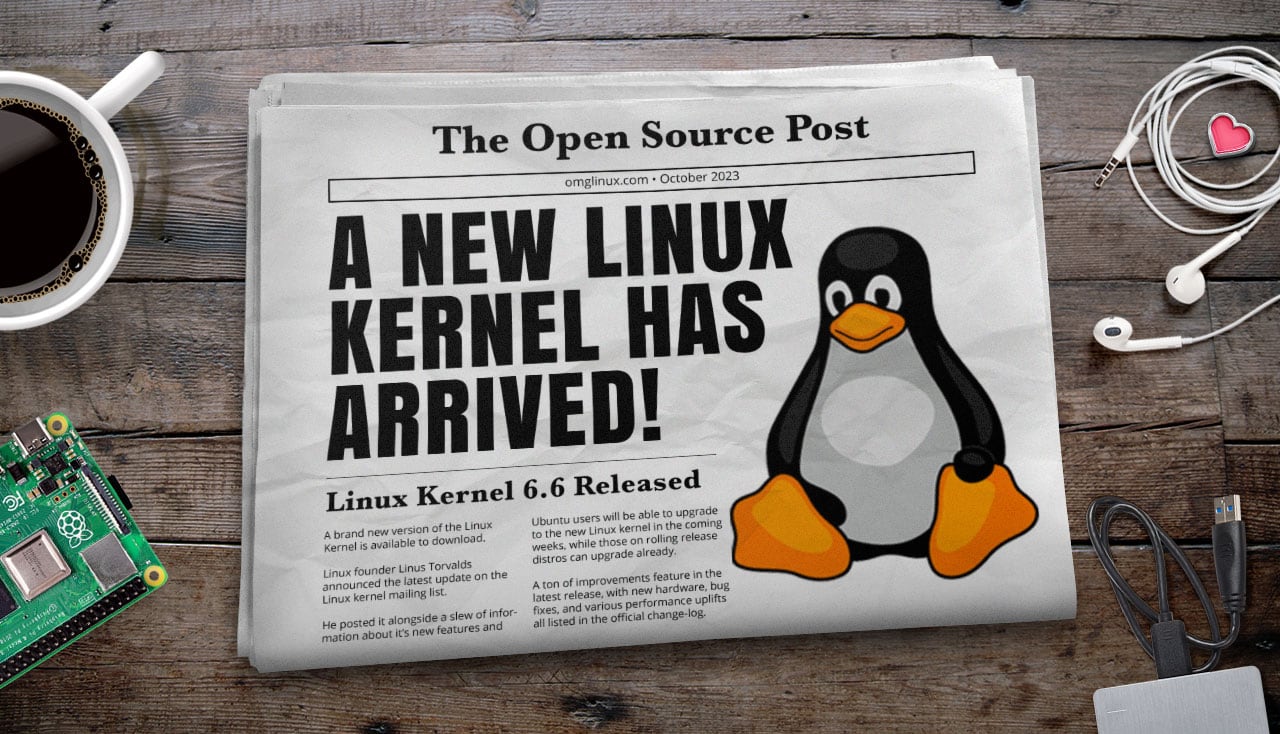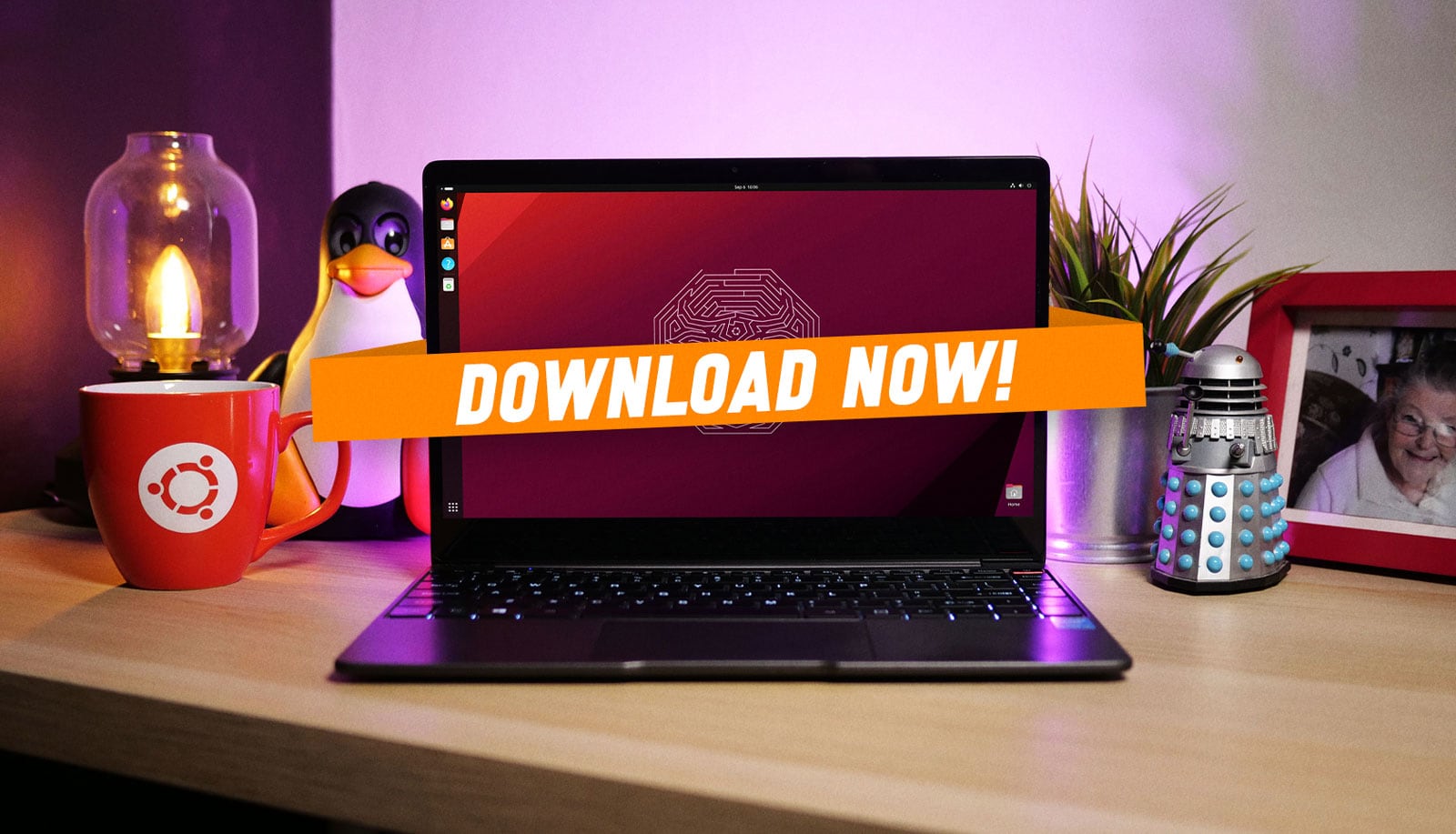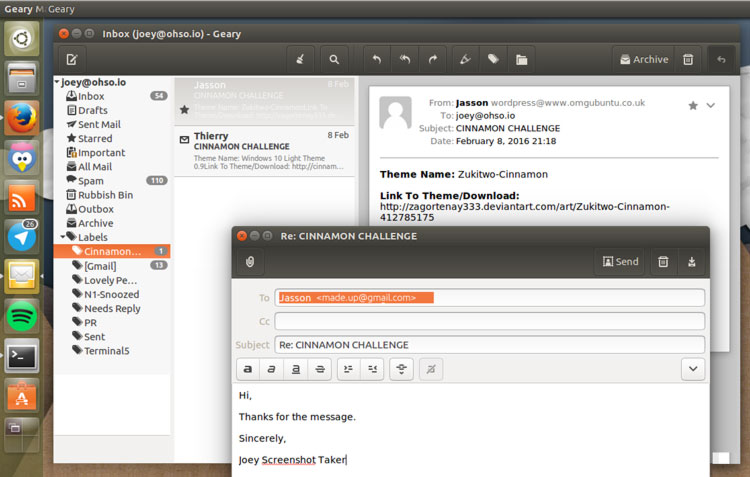A new Linux kernel is out, and it’s better than ever.
Linux kernel 6.6 is a big update that delivers an array of improvements, including a new CPU scheduler that promises to improve performance and reduce latency, a new memory-friendly eventfs subsystem, and improved drivers for a slew of gaming hardware.
And as with most kernel updates, developers are laying the groundwork for the future with ‘initial support’ for upcoming hardware, including new CPUs and GPUs from Intel.
Linus Torvalds announced the launch of Linux 6.6 in an email sent to the Linux Kernel Mailing List (LKML), where he wrote: “So this last week has been pretty calm, and I have absolutely no
excuses to delay the v6.6 release any more, so here it is”.
Here it is indeed!
What’s New in Linux 6.6?
One of the most notable new features in Linux 6.6 is the EEVDF scheduler, which replaces the CFS scheduler.
EEVDF fulfils the same role as CFS, helping divides CPU time between processes – but does so more efficiently, with less lag, and reduced latency. However, kernel devs caution the new schedule may, in rare cases, cause performance regressions with specific workloads – but it’ll be fixed in time.
It’ll be interesting to see benchmarks pitting EEVDF vs CFS. Performance boosts (however minor) are always welcome, and this change sounds like it could provide appreciable boosts in general, as well as for gaming and other latency-sensitive workloads run on Linux.
There’s also a new eventfs subsystem to improve memory efficiency in the tracing subsystem.
Ample AMD-related additions include support for AMD Dynamic Boost Control, fixes for unintended kernel panics on AMD Zen systems, KVM-related buffs, support for AMD Zen 5 temperature and EDAC in AMD Family 1Ah processors, and AMD P-State features control via cpupower.
Among a slew of security enhancements is a notable one: Intel Shadow Stack (which despite the name benefits some AMD chips too). This hardware feature helps to protect applications from return-oriented programming (ROP) attacks on on Intel Tiger Lake processors and later.
On the filesystem front, CephFS now supports FSCRYPT, meaning it’s now possible to encrypt CephFS files and directories; KSMBD is no longer experimental; while “pretty juicy” IOmap improvements poised to deliver appreciable performance gains for I/O-heavy workloads.
Notable gaming-related device support:
- Rumble for Google Stadia controller
- NVIDIA SHIELD controller battery reporting
- SteelSeries Arctis 1 Xbox headset
- Logitech G Pro X Superlight gaming mouse
- GameSir T4 Kaleid controller
Owners of Lenovo laptops frustrated to find the keyboards don’t work under Linux will be pleased to hear that Linux 6.6 adds in support for a bunch — no thanks to Lenovo, though! Newly supported models include the Lenovo V14, V15, and the G14 AMN.
For more detail on some of these and other changes in Linux 6.6 do read through LWN’s merge 1 and merge 2 roundups. Lots more detail, context, plus links to many of the mentioned commits themselves.
How to Install Linux 6.6 on Ubuntu
Linux kernel 6.6 will (one assumes) be available for testing in Ubuntu 24.04 during its development cycle, though the final stable release of, which is due for release in April next year, is likely to feature Linux 6.7 or 6.8, schedule depending.
Linux 6.6 won’t be coming to versions of Ubuntu already released, as the kernel series an Ubuntu is released with is the kernel series it stays on. The exception is Ubuntu LTS releases which do get frequent kernel backports from newer releases – but that still won’t bring Linux 6.6.
You can install a new mainline Linux kernel in Ubuntu, Linux Mint and other Ubuntu-based distributions using the mainline kernel builds provided by Ubuntu developers but these are not strictly intended for end users to idly install.
But if you really can’t wait this kernel you can install Linux 6.6 from there, just do so knowing that it comes with no support attached — so if it breaks your system you get to keep the pieces!





